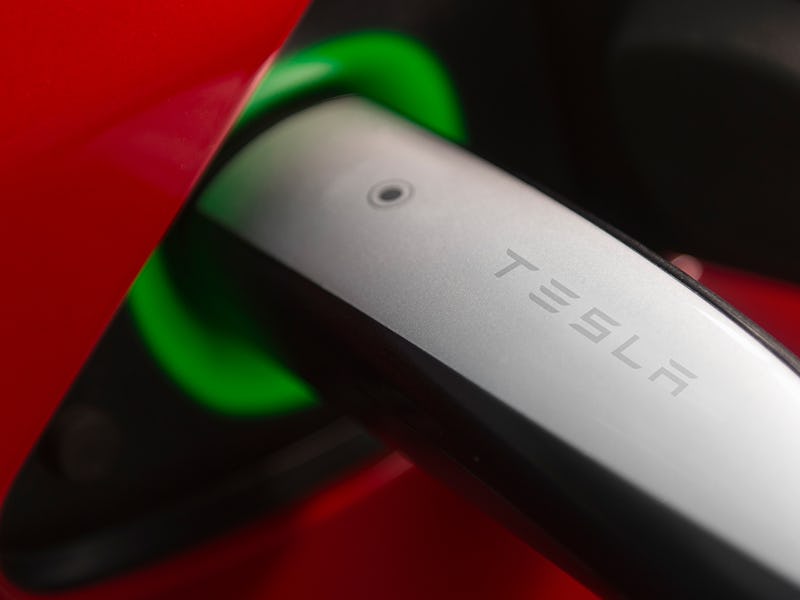Tesla's new software update brings batteries in from the cold
The electric car company has been working to speed up battery recharges.

Tesla is turning up the heat on its electric car batteries.
This week, Tesla started rolling out a new software update for its vehicles that will precondition the battery as it reaches a charger – Tesla-branded or otherwise. That means the vehicle will warm up the battery, enabling it to reach higher charging speeds, when the driver has inputted a charger as a destination. The update, reported by Electrek Thursday as rolling out to early access owners in North America, is version 2020.24.
The move could help alleviate one of the biggest issues about owning an electric vehicle. An Autolist survey in August 2019 found that nearly 30 percent of then-current car shoppers cited "how long they take to recharge" as a reason why they would not buy an electric vehicle. Tesla's stated goals, as outlined in the July 2016 master plan, is to convince more drivers to switch to electric vehicles and help power a shift to sustainable energy.
Reducing recharge times ranks alongside proposals like the long-range Model S and the cheaper-priced Model 3 as some of the ways Tesla is looking to alleviate buyers' concerns.
It's important to note that this preconditioning isn't new to the Tesla lineup. The firm first released details of the feature in March 2019, when it unveiled its third-generation supercharger network:
Beginning this week, Tesla is rolling out a new feature called On-Route Battery Warmup. Now, whenever you navigate to a Supercharger station, your vehicle will intelligently heat the battery to ensure you arrive at the optimal temperature to charge, reducing average charge times for owners by 25%.
Tesla claimed that, when paired with the new chargers, the feature could ultimately reduce battery times by half:
Tesla battery charge times.
What's different with this new update is that the vehicle will now perform preconditioning when the in-car navigation system is driving toward a third-party charger. This functionality was originally restricted to Tesla's superchargers.
So why does heating the battery help? Because at colder temperatures, lithium ions inside the battery start to spike on the carbon anodes inside, instead of smoothly inserting themselves as they should. Researchers at Penn State realized back in October 2019 that they could push this to the limit, by heating a battery to 140 degrees Fahrenheit and charge in 10 minutes. Tesla's chargers can't quite reach that speed, but the firm claims its improvements should help car owners spend just 15 minutes at a supercharger.
The new improvement will enable owners to take advantage of a growing network of charging stations. One such supplier is EVgo, which announced in December 2019 that it would start fitting its approximately 750 stations in the United States with Tesla-compatible chargers. Tesla also sells a $450 CHAdeMO adaptor, which will enable it to charge from more networks like Electrify America.
Elsewhere in the update, Tesla has made some big changes:
- Improvements to the Dashcam Viewer.
- The built-in camera can now be used, with permission, to help Tesla collect data prior to a collision.
- Tesla owners can now disable the auto-lock feature if their car is at home.
- The software now offers more views of the vehicle's cameras, enabling access to video streams from side repeater cameras.
- Traffic light and stop sign detection appear to be rolling out to more markets.
The Inverse analysis – This new update will help Tesla owners make use of a growing number of third-party chargers. The supercharger network is already pretty prolific, with 17,467 stations globally, but an improvement like this could help Tesla owners fill in the gaps when traveling.